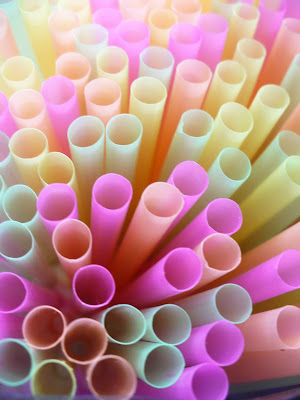This blog may help people explore some of the 'hidden' issues involved in certain media treatments of environmental and scientific issues. Using personal digital images, it's also intended to emphasise seasonal (and other) changes in natural history of the Swansea (South Wales) area. The material should help participants in field-based modules and people generally interested in the natural world. The views are wholly those of the author.
Monday, 27 May 2024
Crumbling Colours?
Plastics are produced from oil. Microplastics are tiny particles of these now ubiquitous materials. They are everywhere (in human bodies, all food chains and even rain drops) with probable negative effects on health. A 3-year Leicester University study, found that UV light (as in sunlight) causes brightly-coloured (red, green and blue) plastics to crumble much more quickly than black, white or silver alternatives. This, of course, means the brightly-coloured versions more speedily decompose into microplastics (https://www.theguardian.com/environment/article/2024/may/27/ditch-brightly-coloured-plastic-anti-waste-researchers-tell-firms). Waste researchers, not unreasonably, suggest that manufacturers should (where possible?) ditch brightly-coloured plastic items. Perhaps someone should tell Lego?
Subscribe to:
Post Comments (Atom)
It's All Downhill Now
The snowline is climbing in the French Alps. This has resulted, thus far, in the closure of 186 ski resorts. This figure is like...

-
I n the UK and US, a pparently popular and successful vegan/vegetarian restaurants are reportedly closing or adding meat to their menus ( ...
-
Early ripening fruit may seem convenient but some folk think it confirms environmental stress. There's also a possibility th...


%20mating%20NWCW.jpg)


No comments:
Post a Comment